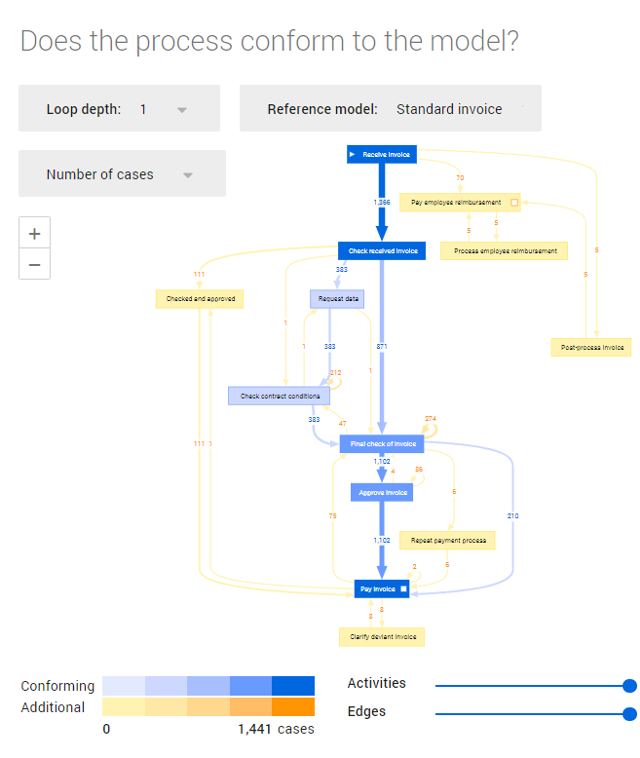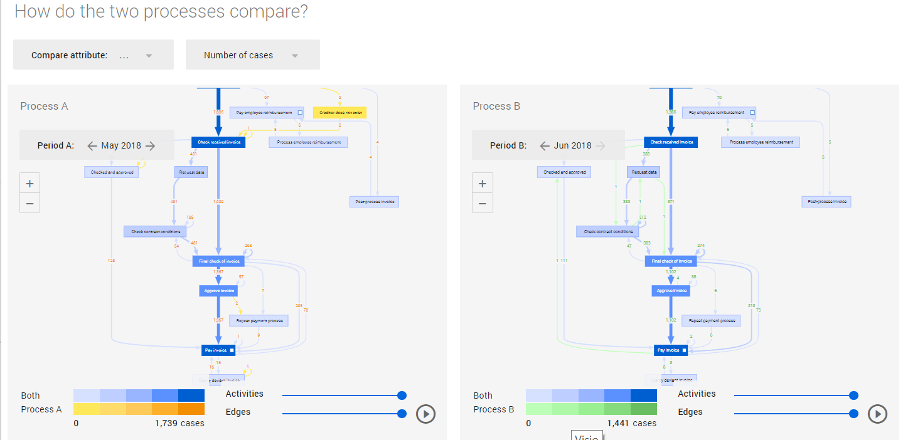
Humzah Ali, Business Analyst, Capita
LinkedIn: linkedin.com/in/humzahali
Introduction
You may have heard of Process Mining, but what actually is it? Simply put, Process Mining allows you to take real-world data from your systems (CRM, HR Portals, internal task trackers amongst others) and analyse that data in a user-friendly way. Process mining tools are built with the goal to help you identify process inefficiencies using your own digital footprint.
This article will detail an example Process Mining lifecycle, and hopefully it will provide you with a better insight on what it is, how to use it best and maybe give it a go yourself.
Business Maturity Assessment
Before even considering using Process Mining, it would be apt to conduct a business maturity assessment. An assessment like this will help ensure that the business is achieving its fundamental goals and objectives. Once completed and you’re sure your process is aligned with business objectives – it would be fitting to identify any weaknesses/inefficiencies in your process.
It can also help identify any struggle points that would hinder the Process Mining venture. For example, poor data modelling methods, or a lack of data available – both are key for Process Mining.
Data Cleansing
Once you are comfortable with your business maturity assessment, and you have decided to start the process mining journey – you can export your dataset from the system used for your process. The dataset you have must contain a few key pieces of information.
- An activity – this is a description of each activity taken in a process (for example, “Check Invoice”)
- A unique case identifier – used to link all activities to a case
- A timestamp – used to indicate the start/end time of the activity
Ensuring your dataset has a minimal number of blanks/null values is another thing to consider. There are many other aspects to data cleansing, but for the purposes of this article, the main points have been mentioned.
Once you have a clean dataset, you can go ahead and ingest the data into the Process Mining tool. The ingestion process will be different depending on the tool used.
The cleaner the dataset, the clearer the insights (from the Process Mining tool), so it is important to not overlook this step!
Process Conformance
Once your data is in the tool, you’ll find an array of features and functions with the Process Mining tool. One of the most useful tools is called “Reference Models”. A Reference Model is essentially a representation of the “happy path” in a process. Once defined, the tool will overlay the Reference Model onto an automatically created process map (which is created with the data ingested).
As you can see by the image below, this gives you a very insightful illustration on how compliant the process actually is, compared to the expected Reference Model. The Process Mining tool will also allow you to easily filter out all conforming/non-conforming cases, which facilitates gathering valuable MI (Management Information).

Opportunity Identification
Reference Models explained above are just one way to identify opportunities to improve your processes – there are multiple features and filters that can be used to identify redundancies and inefficiencies in a process. Even the smallest improvements in a process can provide a huge benefit.
For example, if you find that 40% of your invoice cases are going through an unnecessary duplicate check – the route cause of this issue can be investigated. Maybe after investigation you have found that duplicate checks come as a result of a field not being updated on your system, and you ask the team to ensure this field is always updated. Suddenly, you have found a way of reducing 2 minutes of handling time for 40% of your cases.
Process Optimisation
A shrewd approach to take is to keep using Process Mining after you have found efficiencies in your process. You can ingest a new cut of data from your system, but this time, the cases in the dataset all originate from a date after your process efficiencies have been made.
Once that new dataset is in the tool, you can then use an array of comparison features to compare data from one time frame to another (before changes and after changes). This is a great way to verify that the proposed changes are genuinely being undertaken.
The screenshot below outlines an example where 2 months of data are being compared side-by-side. The colour key at the bottom illustrates the colour differences between the two data sets.

Takeaways
All in all, Process Mining is an excellent way to shine a spotlight on any process. There is no need for prolonged and exhausting workshops to uncover processes – which in fact may not be entirely accurate because the outcome of the workshop is dictated by the information provided by stakeholder. Whether consciously or subconsciously, stakeholders may frame their process different to reality. Process Mining cuts through all the noise by using real data which cannot be argued with.
Thank you for taking time out to read this article, hopefully it was of use to you!


